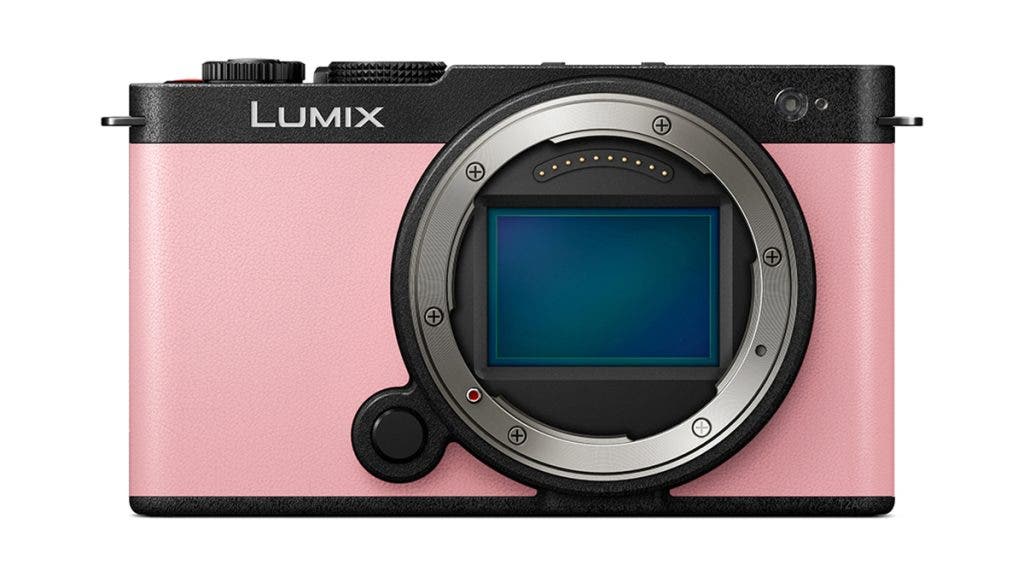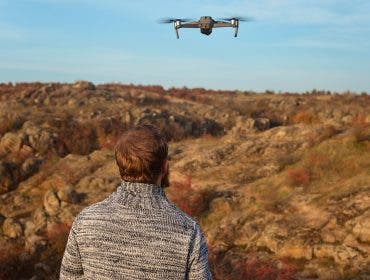Mirrorless cameras have gained a lot of momentum. More and more photographers, videographers, and multimedia creators are switching from DSLRs to mirrorless cameras. Statista says that in 2023, over 5 million mirrorless cameras were shipped worldwide, while DSLRs registered only 1.18 million shipments. The trend is clear and has been so for some time. With famous advocates such as Steve McCurry (a Leica SL series mirrorless camera user) and Ian Hippolyte (a Canon EOS R series mirrorless camera user), mirrorless cameras appeal to many. But how easy is buying the first mirrorless camera? And what should you know before deciding on one? Here is a comprehensive guide to help you choose your first mirrorless camera.

What Is a Mirrorless Camera?
A mirrorless camera is a fully digital camera with interchangeable lenses. Unlike DSLR cameras, mirrorless cameras don’t have an internal mirror to reflect the image in an optic viewfinder. Instead, the camera forms the image directly on the digital sensor and then displays it on an electronic viewfinder. As no mirror has to be moved out of the way for the camera to capture the image, mirrorless cameras are faster at taking a shot. Therefore, they can feature faster speeds when shooting in burst mode.
The lack of an internal mirror has other benefits, too. The camera is smaller, more compact, and lightweight. Therefore, it is much more portable and easier to stabilize even when handheld. By relying fully on digital technology, the fabrication process becomes easier, and therefore, mirrorless cameras tend to be less expensive than DSLRs.
The main drawback is the electronic viewfinder. Resolution and brightness of viewfinders vary greatly, with the top-of-the-line mirrorless cameras being bright and crisp, while entry-level cameras can be noisy and have small delays. As the years pass, though, this is becoming less of an issue; just be weary if your first mirrorless is of an older generation. Another drawback is the reduced variety of lenses compared with the DSLR available lens range. Since the first mirrorless camera was released in 2008, DSLRs have the advantage of a longer history. But that’s about to change.
Why Are Mirrorless Cameras Becoming So Popular?
Mirrorless cameras have recently increased in popularity simply because they’ve become much better. The latest technological innovations drastically reduced their disadvantages: the electronic viewfinders are much more accurate than they used to be; the lens variety for mirrorless cameras reached new heights; and the difference in image quality between DSLRs and mirrorless cameras diminished.
Nowadays, mirrorless cameras are equipped with full-frame sensors, deliver astonishing image resolutions, and incorporate state-of-the-art autofocus systems. Furthermore, they continue to be much more lightweight and portable than DSLRs.
Mirrorless cameras appeal to outdoor photographers who are always on the move and looking for the next adventure. At the same time, they pack many features for videography and provide astonishing 8K video resolutions. They are much more versatile and adaptable than DSLRs, and many beginners find them easier to master. Mirrorless cameras focus on winning over DSLR users but also target new user categories, which makes them even more worthy of consideration when you need a new camera.
Key Features to Consider When Buying Your First Mirrorless Camera
Mirrorless cameras and DSLRs have a lot in common, and the features to consider when buying one of them partially overlap. But to make the most out of a mirrorless camera user experience, you need to prioritize the features that enhance the advantages of mirrorless cameras and reduce their drawbacks. Consider the following characteristics:
Sensor Size
Sensor size is of the utmost importance for any digital camera, whether DSLR or mirrorless. You want a large sensor size to capture as much visual information as possible, take sharp, detailed photos in low light conditions, reduce the risk of ISO noise at high ISO values, produce color-accurate images, and enable you to print your photographs at large scales.
Mirrorless cameras can have a full-frame sensor, a cropped sensor of various sizes, or even a medium-format sensor. Thanks to their reduced size and weight, mirrorless cameras remain easy to handle even when they feature a large sensor. For example, the Hasselblad X2D 100C, a medium-format mirrorless camera, has an impressive 43.8 x 32.9mm sensor packed in a 5.84 x 4.17 x 2.93″ (148.5 x 106 x 74.5mm) body, weighting only 27.86 oz (790g).
Electronic Viewfinder
The electronic viewfinder quality is the mirrorless camera’s main weak point. How could one take a good photo if the viewfinder doesn’t show it properly? Luckily, nowadays, the best first mirrorless cameras may feature bright and clear electronic viewfinders with 100% coverage and exquisite accuracy. Some of them are so well sealed that they don’t even fog up.
To produce an accurate image, the electronic finder must have a high resolution (e.g., 5.76 million dots for the Canon EOS R5 Mark II mirrorless camera). You also want an OLED display instead of an LCD because the former is brighter than the latter. The viewfinder’s magnification factor matters too. The larger it is, the better view you have.
Image and Video Resolution
Image resolution is an important feature of any digital camera. However, add video resolution to your checklist when buying a mirrorless camera. Most mirrorless cameras can record 4K videos, but some of them can record 8K videos.
It’s the case of the Nikon Z8 mirrorless camera that is able to shoot 8K/60p and 4K/120p videos, with 12-bit N-RAW up to 8K/60p and 4K/120p. High video resolutions provide plenty of room for post-processing functions, such as zooming in, panning within a frame, and many more.
Autofocus
An advanced autofocus system is one of the main advantages of this type of camera. So, choose the best one when buying your first mirrorless camera. A performant autofocus system is fast, silent, and accurate. It can recognize objects in real time (e.g., people, faces, cars, animals, etc.) and track them. It features many focus points and focus area settings.
Many autofocus systems rely on artificial intelligence to detect and track objects. For example, the Sony a1 II mirrorless camera can detect humans, animals, birds, insects, cars, trains, and airplanes. It can also detect the face and eyes of humans and animals. And it performs equally well for both still and moving pictures.
Lens Compatibility
The variety of compatible lenses for mirrorless cameras was one of the initial drawbacks of this type of camera. Because mirrorless cameras weren’t popular, many brands didn’t invest in developing lenses for them. However, things have changed. Nowadays, you can find a wide range of lenses specifically designed for mirrorless cameras. To be on the safe side, take a look at available lenses when choosing your first mirrorless camera.
In the world of mirrorless cameras, Sony and Panasonic have a large market share, and you’ll find plenty of prime and zoom lenses for their lens mount systems. The iconic Sony FE 50mm f/1.4 GM lens is a good starting point. Of course, major brands, such as Canon and Nikon, offer mirrorless cameras and exquisite lenses for them as well.
Photographer’s Priorities
Technologically speaking, the differences between DSLRs and mirrorless cameras are minimal. But there remains a difference in how the cameras feel and adapt to your workflow. To find the best first mirrorless camera, consider your priorities.
Do you often find yourself shooting outdoors, in tough conditions, and in any weather? Look for a mirrorless camera that resists weather, dust, dirt, and scratches. Do you need a discrete camera for candid street photography? Look for a compact mirrorless camera and lens combo with a silent autofocus system and an ergonomic design. Do you shoot more videos than photos? Look for a camera with outstanding video capabilities, ports for additional accessories (e.g., external microphone or display), and advanced connectivity.
Tips for Choosing Your First Mirrorless Camera
Choosing your first mirrorless camera is a combination of technical and personal requirements. Image quality should be your number one priority because it’s something you can’t change. So, go for the camera with the largest sensor size and image resolution you can afford. Mirrorless cameras are less expensive than DSLRs, so here is where the money difference can go.
Then, consider your workflow. Often shooting moving objects? Check out the camera’s autofocus system performance. Often shooting in less-than-ideal lighting conditions? Check out the camera’s dynamic range and built-in image stabilization. Do you know you are up for big outdoor adventures? Check out the camera’s robustness and resistance to rough conditions.
Don’t forget about the lens. It may be easier to find a standard 50mm lens or a mid-range zoom lens than a dedicated macro lens or ultra-telephoto lens. Make sure you have access to the lens required by your preferred photographic genre before buying your first mirrorless camera.
Consider the camera’s design, too. Some mirrorless cameras tend to have a more colorful and sleek design. Why not choose a camera in your favorite color if you can? Have a bit of fun. It’s in the mirrorless camera’s DNA.

Final Thoughts
Mirrorless cameras target both professional and amateur photographers, advanced photographers, and beginners. They are versatile, adaptable, lightweight, and portable. They are designed not only to help you shoot good photos and videos but also to have fun while doing so. The best first mirrorless camera is the one you always want to have on you because it’s always ready for action.






